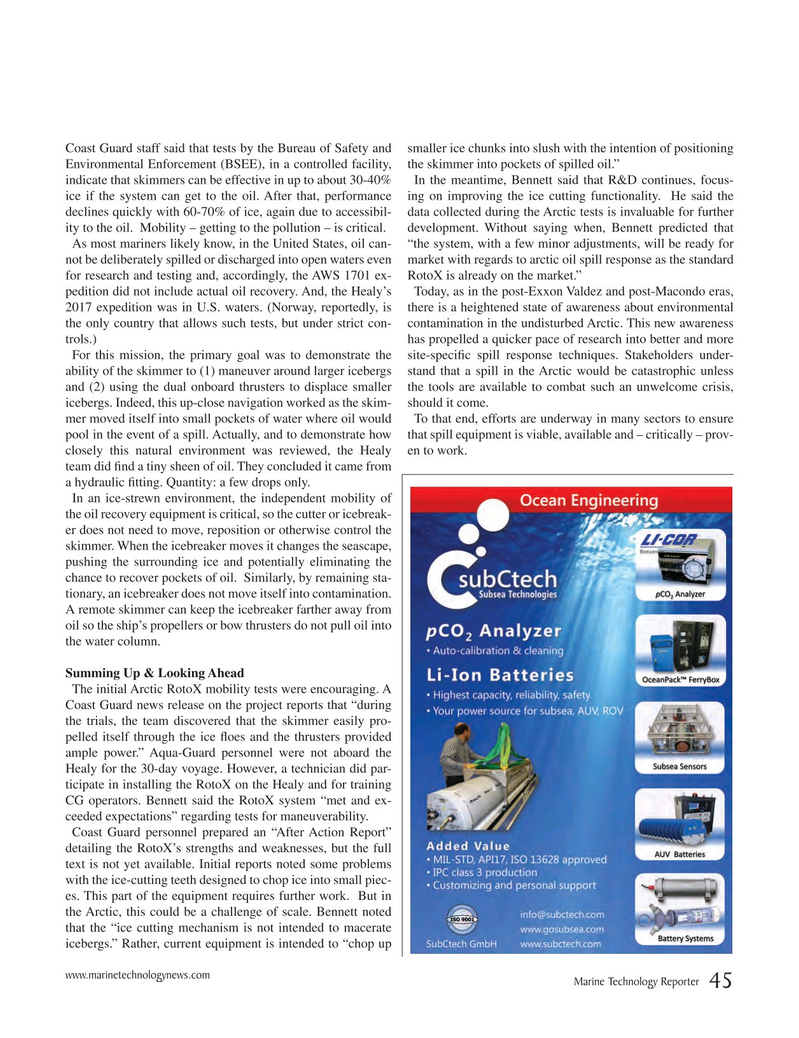
Page 45: of Marine Technology Magazine (October 2017)
AUV Operations
Read this page in Pdf, Flash or Html5 edition of October 2017 Marine Technology Magazine
Coast Guard staff said that tests by the Bureau of Safety and smaller ice chunks into slush with the intention of positioning
Environmental Enforcement (BSEE), in a controlled facility, the skimmer into pockets of spilled oil.” indicate that skimmers can be effective in up to about 30-40% In the meantime, Bennett said that R&D continues, focus- ice if the system can get to the oil. After that, performance ing on improving the ice cutting functionality. He said the declines quickly with 60-70% of ice, again due to accessibil- data collected during the Arctic tests is invaluable for further ity to the oil. Mobility – getting to the pollution – is critical. development. Without saying when, Bennett predicted that
As most mariners likely know, in the United States, oil can- “the system, with a few minor adjustments, will be ready for not be deliberately spilled or discharged into open waters even market with regards to arctic oil spill response as the standard for research and testing and, accordingly, the AWS 1701 ex- RotoX is already on the market.” pedition did not include actual oil recovery. And, the Healy’s Today, as in the post-Exxon Valdez and post-Macondo eras, 2017 expedition was in U.S. waters. (Norway, reportedly, is there is a heightened state of awareness about environmental the only country that allows such tests, but under strict con- contamination in the undisturbed Arctic. This new awareness trols.) has propelled a quicker pace of research into better and more
For this mission, the primary goal was to demonstrate the site-speci

 44
44

 46
46
